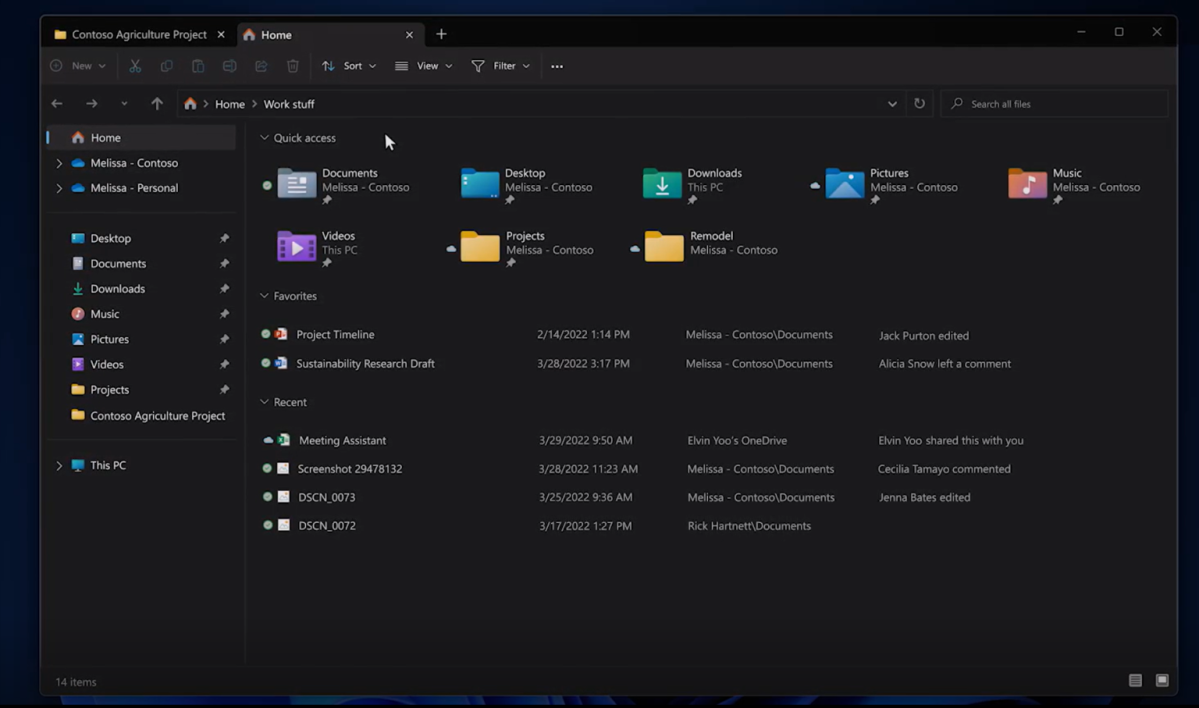Windows 11 will add new features whenever Microsoft wants

 Image: Microsoft
Image: MicrosoftWith the new Windows 11 2022 Update (formerly known as Windows 11 22H2), Microsoft is asking you to accept a new, continuous cycle of updates rather than receiving new features once or twice per year. Meet what Microsoft is calling “controlled feature rollouts,” a series of new features that can be added to Windows 11 really whenever Microsoft feels like it.
These small, controlled feature updates are what Microsoft is now referring to as “continuous innovation.” These are the “Windows 11 Moments” — a term that has been used before, but that Microsoft is not using right now– for updates that can be added in between major feature updates.
You’ll be able to download the first of these in October, adding the tabbed File Explorer menu that didn’t quite cross the finish line in time for the Windows 11 2022 Update’s release. Otherwise, they’ll be more broadly released in November, Microsoft says.
In short, here’s what you need to know: Microsoft is moving back to a single, major feature release for Windows 11 per year, rather than the current two. In between, Microsoft will roll out an undisclosed number of CFRs to consumers, on an undisclosed schedule. It all comes with a benefit, Microsoft says: better responsiveness and reliability. Microsoft says it’s already seeing a reduction of bugs as a result.
Windows vice president Aaron Woodman denied earlier reporting that Windows is on a three-year cadence, however, or that Windows 12 is on the horizon. “You know, I have not heard of anyone internally saying, you know, we’re in a three year cadence,” Woodman said in a briefing with reporters. “So there’s nothing there. From a Microsoft perspective, we’re on an annual release cadence. Our intention is to bring innovation to those customers as quickly as possible.”
What Windows 11’s new release timing means for you
The Windows 11 2022 Update begins rolling out today, and our Windows 11 2022 Update (22H2) review details a middling release, with substantive changes but not where users expect. The new Windows release also omits some features that were expected, based upon test builds Microsoft released publicly.
That’s okay, executives say. The CFRs allow Microsoft to take the time to test new features appropriately, then add them when they’re ready. “From a quality perspective…[there are some features] that just can’t make the cart,” Woodman said. “And so the question to us first and foremost is, do we wait for the next cart a year later?”

Microsoft
Microsoft
Microsoft
First, new CFR features will be tested via the Windows Insider program, as they are today. Microsoft executives didn’t specifically name which channel they would be deployed in, but Microsoft has used the Beta Channel previously. (Here’s how to join the Windows Insider program.)
John Cable, vice president of program management for Windows Servicing and Delivery, said that the next step will be early adopters; once CFRs are ready for general release, they’ll first be deployed in the optional non-security update you’ll sometimes see in Windows Update. The next step in what Cable called a “phased and measured approach” will be to push the new features as “feature experience packs.” They’ll be pushed to your PC automatically, like patches, and are designed with minimal bandwidth and storage requirements.
In a briefing with reporters, Microsoft executives didn’t say if you’ll be able to halt and manage the new CFR updates like you can currently pause feature updates. (Here’s how to pause Windows updates.) Businesses, however, will: the new CFRs will be off by default. (Typically, however, consumers can pause updates for a week or sometimes more.)
Cable said that this technique has been used previously for feature updates on Windows 10, rolling out updates to the user base at large when everything looks good.
What will be in these CFRs? Cable said Microsoft will use everything from blogs to email inbox notification emails to alert you how these new updates will affect your Windows experience. However, “for most [users], they’ll discover the features through natural discoverability within the OS,” he said.
Can the new CFRs reduce Windows bugs?
As every Windows user knows, however, new code means new bugs. Microsoft, however, believes the new CFRs offer in just the opposite: better reliability.
It’s not clear that the CFRs are themselves responsible for the improvements in reliability. Microsoft chief executive Satya Nadella allegedly made an infamous blunder in 2014 when he decided to cut a portion of the company’s quality-assurance team, placing the responsibility of finding and fixing bugs on the developers. Coincidentally (or not) Microsoft launched the Windows Insider program that same year, allowing the company to test its beta software with the public.
According to Cable, the company has made great strides in eliminating Windows bugs. “We have made massive improvements in this the number of update issues and update-related issues,” he said. “They’ve dropped precipitously, quarter over quarter and year over year in Windows 10, and we’re applying that to Windows 11.”
“It’s hard for me to promise that there won’t ever be any compatibility issues based on an update, but these changes that we’re making in our programs are designed to help with exactly this,” Cable added. “I do expect it to get much better based on these changes. But of course I can’t turn out a promise there won’t be any issues. I am excited to see the number of issues drop based on this innovation.”
Author: Mark Hachman, Senior Editor

As PCWorld’s senior editor, Mark focuses on Microsoft news and chip technology, among other beats. He has formerly written for PCMag, BYTE, Slashdot, eWEEK, and ReadWrite.
Recent stories by Mark Hachman:
Finland’s ‘Windows95man’ is taking Eurovision by stormMicrosoft’s Copilot AI is stealing one of Midjourney’s best featuresMore workers are using AI, but they’re ashamed to admit it







